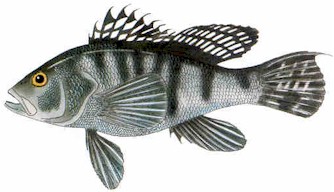Regulators - Recommendations
Apart from the general guidelines above, I don't recommend any particular brand or model of regulator over any other. I have used many different regulators that all worked well enough. I don't think it matters. Just remember - you get what you pay for.
With regard to octopuses: if you are on a budget, buy a better ( ie: sealed first stage ) regulator without an octopus, rather than a cheaper one with it. A same-source octopus typically adds $50-$100 to the initial cost of a regulator, plus $15-$25 annually for "service", and is completely useless. Should you later need true redundancy for local diving, do it right and get a pony bottle and second complete regulator.
Some random notes on regulators: ScubaPro always gets top marks in comparative tests, yet they have not significantly changed many of their basic designs in thirty years! ScubaPro generates the strongest opinions of any manufacturer - people either swear by them or swear at them.
Both ScubaPro and Dacor tend to use non-standard hoses and fittings, which can be a maintenance and compatibility issue. Not all brands of second stage are interoperable with different brands of first stage, which can be a definite issue with integrated octopus/inflators.
DIR
DIR requires a seven foot hose on your primary regulator. The purpose of this is to allow two people to squeeze through a small passage one at a time while buddy breathing. This is surely a lifesaving idea in cave diving, but it is unnecessary in open water. In open water, there really is no need for the super-long hose, as in an air-sharing situation at least one of you will be holding on to the other to avoid being separated in the waves and currents.
DIR goes into great detail about how hoses should be routed for streamlining, all of which makes sense, but is honestly not all that critical in open water. The long hose gets wrapped back under the tanks and then around the neck. Those that do it don't seem to mind, but I would not like to get all tangled up like that myself; I will stick with a short hose. If you already own the "correct" regulators, then you might as well rig up the DIR way (except for the long hose) but if not, I would not go out and spend a pile of money replacing everything for only minimal benefits. Once or twice I have had a hose catch on something in a tight space, and it was no big deal to back up a few inches and unsnag it.
DIR specifies that in an out-of-air situation, you donate your primary regulator ( the one in your mouth with the seven-foot hose ) and switch to your backup. An out-of-air diver is likely to snatch it away anyway, so in this case DIR is simply codified panic. I have a better idea when it comes to air-sharing: don't dive with idiots. Not that I wouldn't do everything possible in a rescue situation, but if you can't plan your dive and manage your air supply, then I'd rather not be in the water with you. Harsh perhaps, but realistic.

